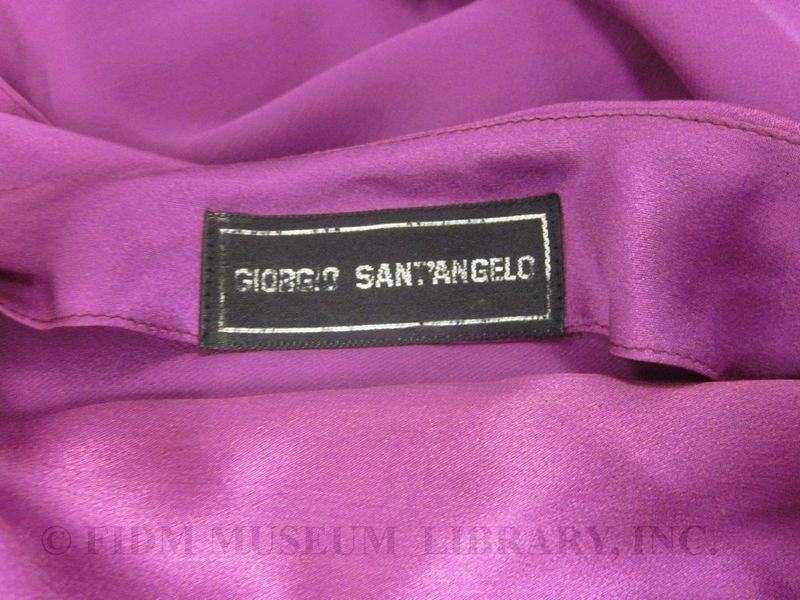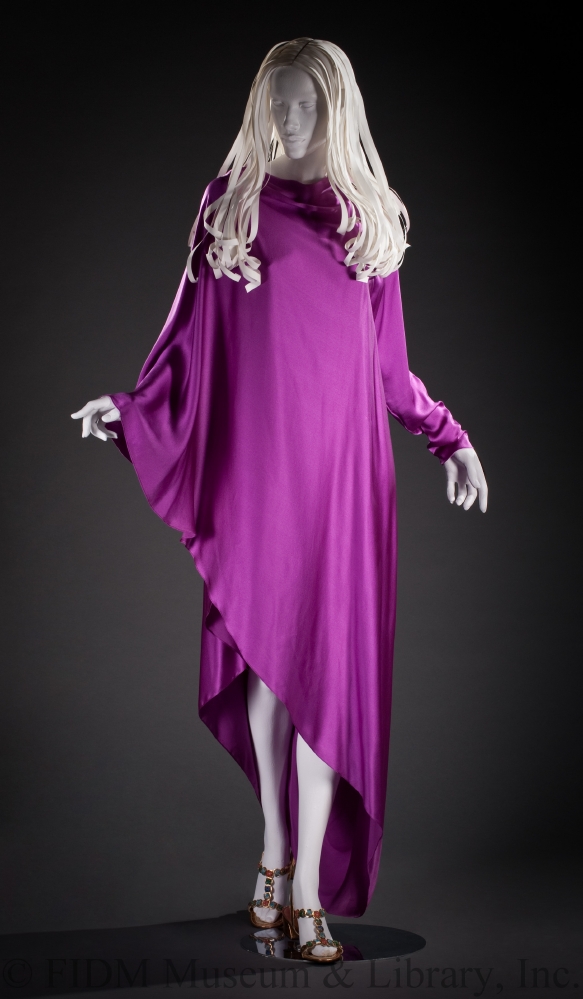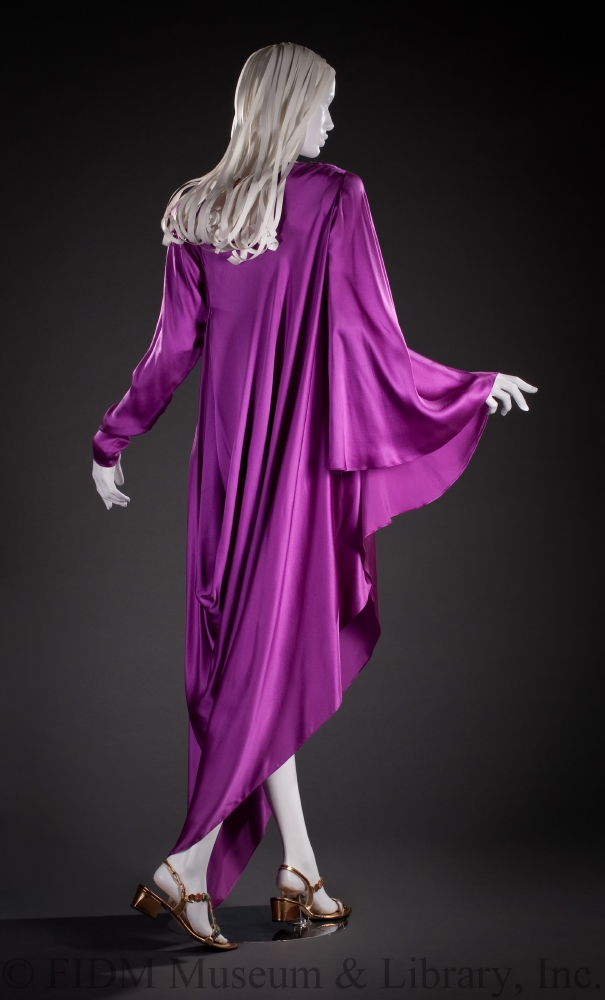When Italian-born, New York-based designer Giorgio di Sant'Angelo (1933-1989) launched his label in 1969, he quickly became known for his colorful, intricately constructed gowns inspired by ethnic dress and Renaissance and Symbolist painting. In contrast to the starkly minimalist Space Age fashions of the 60s, his taste for prints and ornamentation anticipated flower power. By the late 1970s, however, he had dropped the "di" from his name and embraced a sleeker, body-conscious aethestic designed for a new fashion stage, the discotheque.
Giorgio Sant'Angelo
1976-79
Gift of Betye Burton
S2014.145.9
This asymmetrical dress in electric purple silk charmeuse–currently on display in FIDM's 2nd-floor lobby–embraces the drama, glamour, and fantasy of the disco scene. The shimmering, swaying textile would have reflected light like a disco ball. Flying panels and a flowing sleeve give the dress a sense of freedom that was perfectly in tune with the Me Decade.
Sant'Angelo "had this amazing way of creating volume," remembers Inacio Ribeiro, of the British label Clements Ribeiro. He abandoned zippers in favor of clinging or billowing textiles that moved with the body. An acclaimed swimwear designer, he was comfortable working with stretch fabrics, which were just beginning to move into the everyday female wardrobe. These comfortable, form-fitting garments were ideal for modern, working women.
Discos like Studio 54 were magnets for the fashion world, attracting designers, models, and celebrities, including Sant'Angelo clients Diana Ross, Cher, and Bianca Jagger. Sant'Angelo's chief rivals, Halston and Calvin Klein, became known for their nightlives as much as their day jobs. Whether or not you intended to dance, there was no better place to see and be seen.



